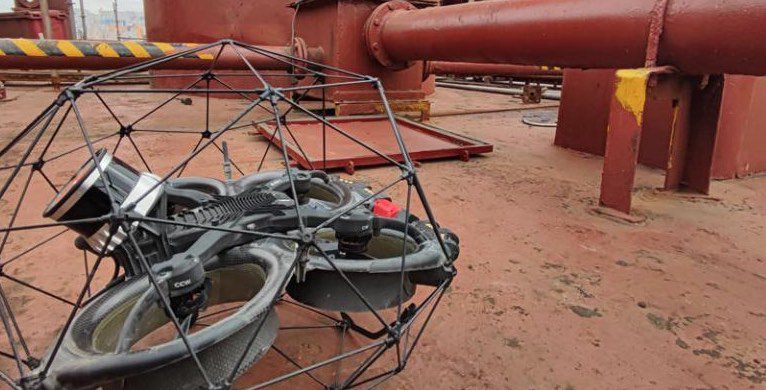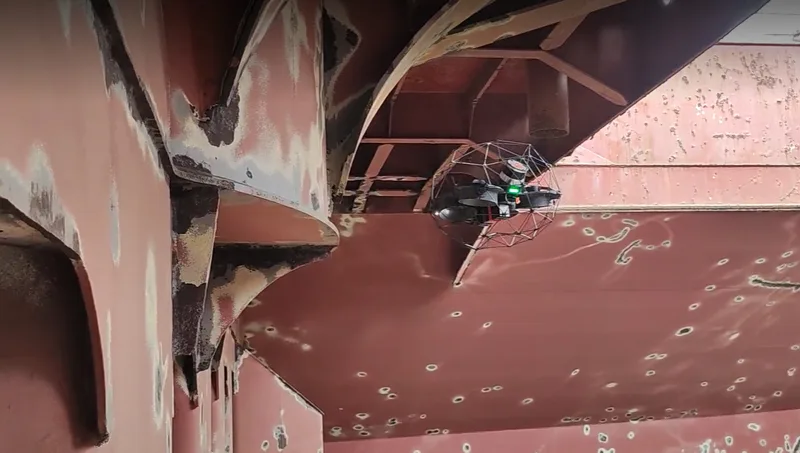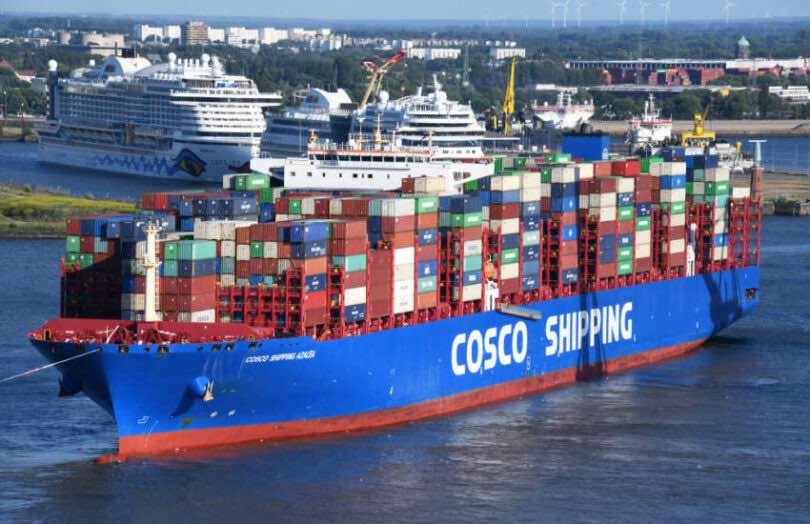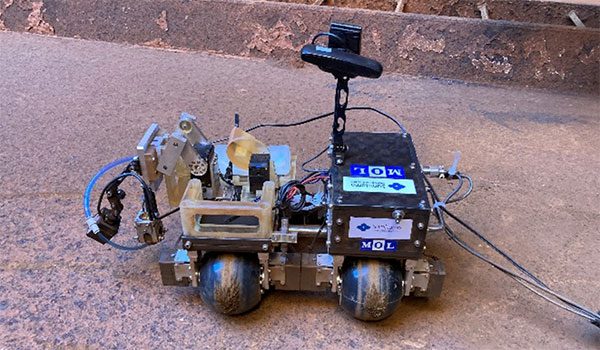28 November 2024
New opportunity for drone inspection

Like flying cars and jetpacks, drones may feel like technology from the future. But drones are becoming commonplace in many industries today – and the maritime sector is no exception. Remote drone inspection techniques can bring many benefits to ship and offshore asset owners. As drone technology rapidly advances, what options exist today and what are the considerations for ship owners?
Table of Contents
New fleet of driverless vehicles
Broadly speaking, there are two types of drones: remotely operated vehicles (ROVs) and unmanned aerial vehicles (UAVs). If you ever played with a remote-controlled toy as a child, then you’ve come across ROVs.
However, when most people hear “drone,” they picture a miniature battery-powered helicopter-like aircraft. That is a perfect example of a UAV, although not all UAVs are battery-operated. Some flying drones are powered using umbilical system cables that can keep them airborne indefinitely.
The newest generation of UAVs is equipped with robust measurement and detection tools. The latest drones can include anything from ultrasonic thickness measurement (UTM) technology to measure hull integrity to LiDAR systems for creating 3D maps of inspection sites. This is particularly beneficial to the maritime industry because drones can enter and assess locations that would be difficult and risky for crews or surveyors.
Next level surveying
Many ROVs that function like miniature remote submarines are already in use, to examine hull parts for example. Though UAVs are much less common, they can be just as effective. Visual monitoring systems are also improving, making flying drone inspection suitable for Class surveys.

Underwater cleaning of ship hull – Explained
This is everything you need to know about commercial underwater cleaning operations for a ship hull and its dangers.
Ship Nerd
Inspections conducted by the latest generation of high-tech drones substantially improve on traditional methods. UAVs reduce the need for cherry pickers, climbers, and scaffolding to inspect very high areas. They are therefore safer, cheaper, and less resource intensive than any traditional Class survey method. For example, an inspection that once took two crew members can now be conducted by one nimble drone, comprehensively checking every inch of the site. Crews nevertheless remain a vital part of the drone inspection process.

Not perfect yet
While drone technology is advancing rapidly, remote inspection techniques still have limitations. Battery-powered drones can only stay airborne as long as their batteries last, and umbilical drones are not a perfect solution because their cables restrict maneuverability. Drones are also expensive. These factors, though, are common in emerging technologies, and we are already seeing some improvements. Battery capacity and flight times have increased by 20%, and costs will decrease as drones become more common.
A more complex task is maximizing the usefulness of the data drones collect. Surveys typically only require a summary of findings. What should ship and asset owners do with all the data drone cameras and tools automatically collect during the remote survey process? The maritime industry should find a way to leverage that information, using 3D models for example. There’s no reason to leave potentially insightful data on the table when findings could instead be integrated into analytics systems.
An autonomous future
Drones are only likely to become more widely used and advantageous in the next decade. We could even see autonomous drones in shipping as early as the next five years. These future drones could rely on an automatic guiding system thanks to embedded LiDAR technology to enter compartments independently and conduct surveys without human operation. The next generation of drones could become intelligent and self-guided enough to autonomously find entrances into confined spaces and scan surroundings, all while guaranteeing that their analyses are thorough and safe.

Drone inspections for air and sea pollution in Rotterdam
The Port of Rotterdam Authority will test drone modules to conduct sea-going and inland shipping inspections to tackle pollution.
Ship Nerd
Regulations
ROVs and UAVs can be used for different types of Class surveys – annual, intermediate, and renewal, as well as in-water surveys. For any Class survey, drones are a viable option to perform a close-up visual drone inspection and ultrasonic thickness measurements to meet Class requirements and complete the survey quickly and efficiently. The drone inspection concept falls under the International Association of Classification Societies regulation 42: Guidelines for Use of Remote Inspection Techniques for Surveys. Classification societies already implement these regulations in their Rules for ships and offshore units and have service supplier procedures in place. Today, service suppliers have been certified worldwide to support ship and offshore unit owners with drone inspection use.
Safety & Innovation
With a regulatory framework already in place, UAVs and ROVs present a credible solution to meet Class survey requirements in a safer, more cost-effective, and often faster manner.
Classification societies are collaborating with drone inspection suppliers and issuing certificates for remote survey techniques. Hence, support ship and offshore asset owners in leveraging remote inspection techniques and drones as a reliable alternative to traditional inspection methods.
Source: BV
See Also
The Montreal Port Authority (MPA) and Global Spatial Technology Solutions (GSTS), announced the launch of a new project to measure and reduce the carbon footprint of vessels using artificial intelligence – AI technology.
The Green Shipping Corridor capability enables vessels to establish an initially low and ultimately zero-carbon emissions route while matching their arrival with berth availability and maintaining compliance.

AI technology to measure and reduce the carbon footprint of vessels
The Montreal Port Authority (MPA) and GSTS, launched a new project to measure and reduce the carbon footprint of vessels using AI Technology.


